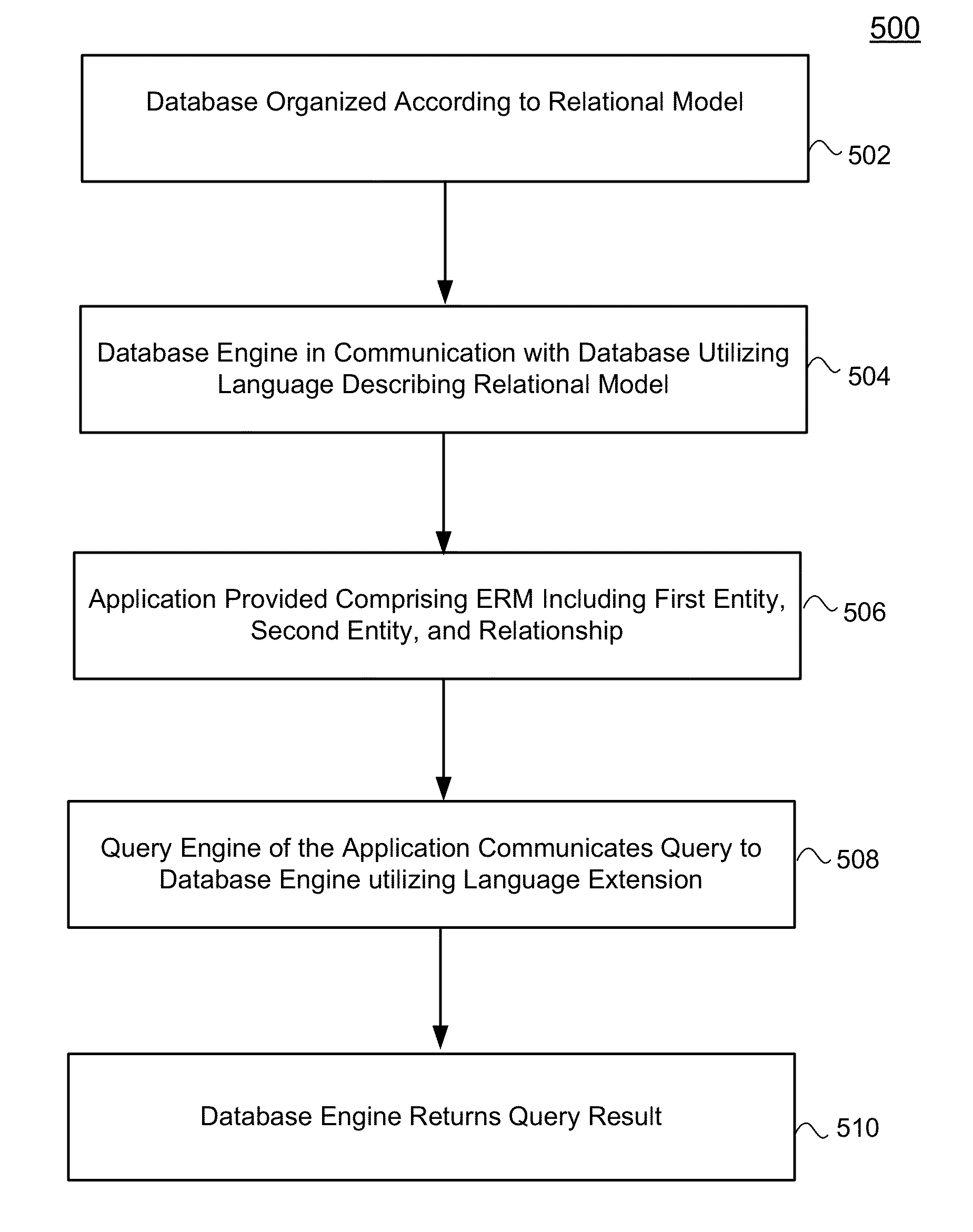Database language extended to accommodate entity-relationship models
a database language and entity relationship technology, applied in the field of databases, can solve the problems of fragmented environment with information that cannot be shared between applications, inability to share individual information across stacks, and inability to share information among applications
- Summary
- Abstract
- Description
- Claims
- Application Information
AI Technical Summary
Benefits of technology
Problems solved by technology
Method used
Image
Examples
examples
[0071]Some examples of extension of the SQL database language to provide entities and associations of ERMs, are now given below.
[0072]
entity Address {owner : Association to Employee; / / can be used for :m associationsstreetAddress; zipCode; city; / / snipped type defskind : enum { home, business };}entity Employee { addresses : Association[0..*] to Address via backlink owner; homeAddress = addresses[kind=home]; / / → using XPath-like filter.}Association to Address;Association to Address { zipCode, streetAddress };Association [0..*] to Address via backlink owner;Association [0..1] to Address via backlink owner where kind=home;Association [0..*] to Address via backlink owner where zipCode like‘76*’;Association [0..*] to Address via entity Emp2Adr;Association [0..1] to Address via entity Emp2Adr where kind=home;Association [0..*] to Address on owner=this;Association [0..*] to Address on Address.owner._id = Employee._id;Association to Address on owner=this AND kind=home;
[0073]For specifyi...
PUM
 Login to View More
Login to View More Abstract
Description
Claims
Application Information
 Login to View More
Login to View More - R&D
- Intellectual Property
- Life Sciences
- Materials
- Tech Scout
- Unparalleled Data Quality
- Higher Quality Content
- 60% Fewer Hallucinations
Browse by: Latest US Patents, China's latest patents, Technical Efficacy Thesaurus, Application Domain, Technology Topic, Popular Technical Reports.
© 2025 PatSnap. All rights reserved.Legal|Privacy policy|Modern Slavery Act Transparency Statement|Sitemap|About US| Contact US: help@patsnap.com



